Categories
- Argentina
- Chile
- Antarctica
- Easter Island
- Falklands (Malvinas)
- Bolivia
- Peru
- Uruguay
- Paraguay
- Brazil
- Venezuela
- Colombia
- Ecuador
- Galapagos
- Panama
- Costa Rica
- Cuba
- Nicaragua
- Honduras
- El Salvador
- Guatemala
- Belize
- Mexico
- Latin American Xmas
Pages
- Street Art of Buenos Aires
- A week in Buenos Aires
- The Jesuit Missions in South America
- Contact Us
- Map of Central America
- First week in Latin America – October 2009
- Home Page
- Map of South America
Archives
- October 2011 (3)
- September 2011 (9)
- August 2011 (10)
- July 2011 (7)
- June 2011 (6)
- May 2011 (11)
- April 2011 (10)
- March 2011 (4)
- February 2011 (5)
- January 2011 (6)
- December 2010 (6)
- November 2010 (4)
- October 2010 (8)
- September 2010 (5)
- August 2010 (7)
- July 2010 (5)
- June 2010 (6)
- May 2010 (6)
- April 2010 (7)
- March 2010 (6)
- February 2010 (9)
- January 2010 (4)
- December 2009 (8)
- November 2009 (5)
- October 2009 (2)
Querétaro & Guanajuato
20th August 2011
Santiago de Querétaro [24] has a fine 74 arched aqueduct from 1726 that runs 1280 metres across a valley into the city. Founded in 1531, the Spanish laid out a grid style settlement while the native section retained a more haphazard arrangement. This unusual mix adds to the charm of the historical centre, bustling with people on the weekend.
.
Wine is produced to the northeast of Querétaro, but we found it impossible to find until we stumbled upon the tiny cafe Pluma Lounge where we enjoyed a bottle of white wine from nearby Ezequiel Montes with a selection of local cheeses and a loaf of homemade bread bought from the bakery next door. We finished off with coffee and chocolate, also local.
.
.
Founded in 1559, Guanajuato [25] is a smaller city built on several hills. One of the world´s richest silver mines in colonial times produced many lovely buildings and churches. Along the valley at the centre of the town there are 2 streets for cars, with several tunnels built in river beds underneath. Narrow twisting pedestrian alleys, interrupted by plazas and gardens, wind up the hills. It is easy to get lost. Balconies almost touch in the Callejón Del Beso (Alley of the Kiss), the narrowest alley where lovers once kissed across the street. We stayed at Casa de Pita, a knick knack filled house, with many levels, twists and turns, much like the city itself. Owner Pita is a generous bundle of energy and serves a great breakfast around the table in her kitchen.
.
The Museum of Mummies is the strangest place. Because of the number of burials, the local cemetery followed the old Spanish custom of exhuming and cremating bodies after five years. Dozens of bodies were disinterred between the late 1800´s until the 1970´s. But instead of skeletons, the cemetery workers found the bodies naturally mummified due to the dry conditions and stored them. Most of the mummies have their eyes and mouths open as if they were screaming. It is eerie.
.
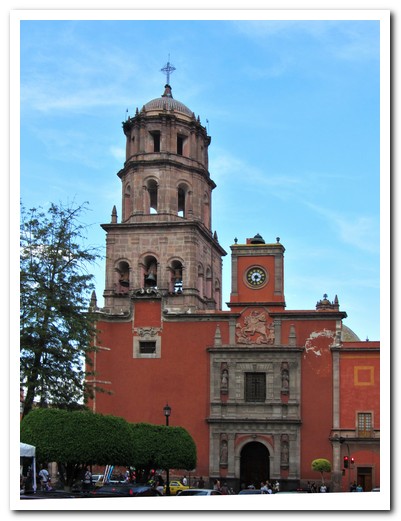
Querétaro – Templo & Ex-Convento de San Francisco …

… with Santiago the Moor Slayer on the facade
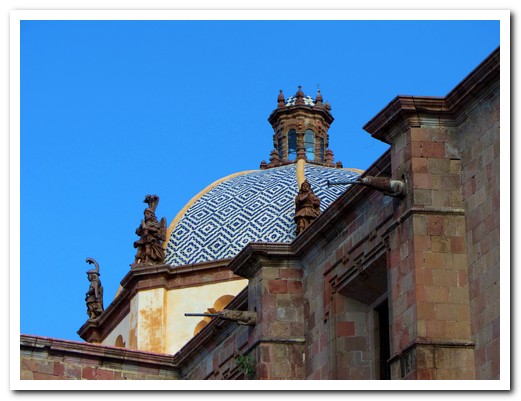
Dome with an indian angel on Templo & Ex-Convento San Agustin …
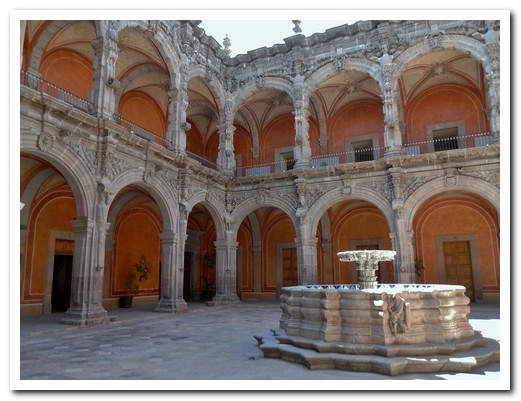
… Its courtyard is one of the most magnificent in Latin America
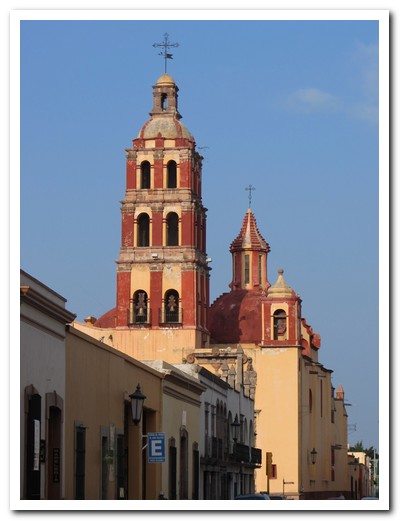
Convento & Templo de Santo Domingo (1692)
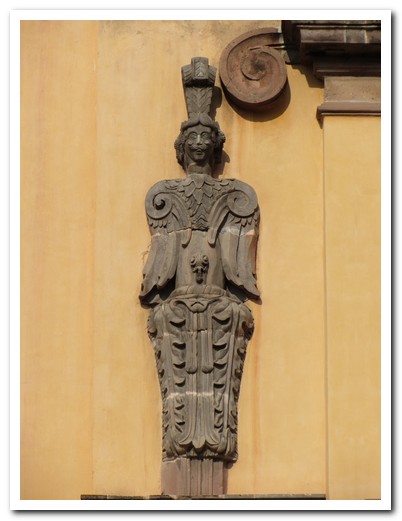
Indigenous looking angel on the front of Santo Domingo
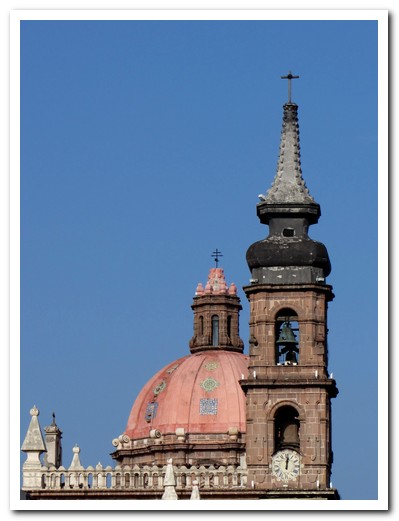
Pink dome of Sana Rosa de Viterbo
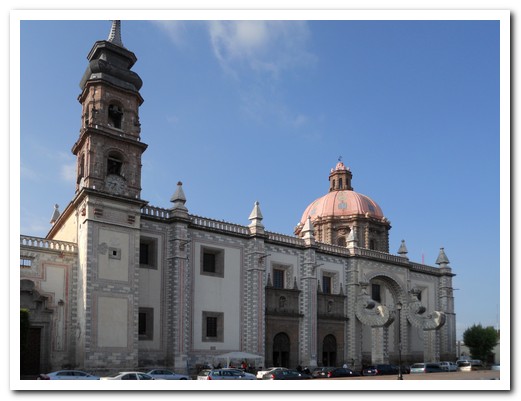
Elaborate Baroque front of Santa Rosa

Tiled dome of Santa Clara de Jesus (1633)
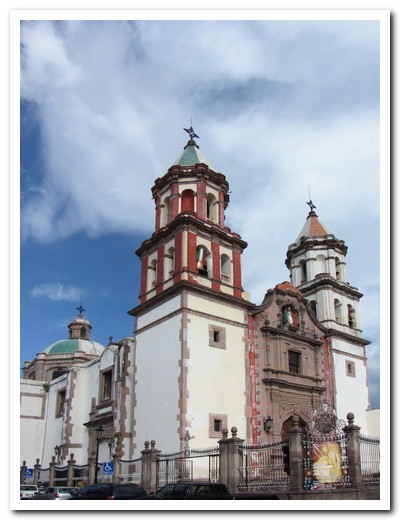
Church of Guadalupe
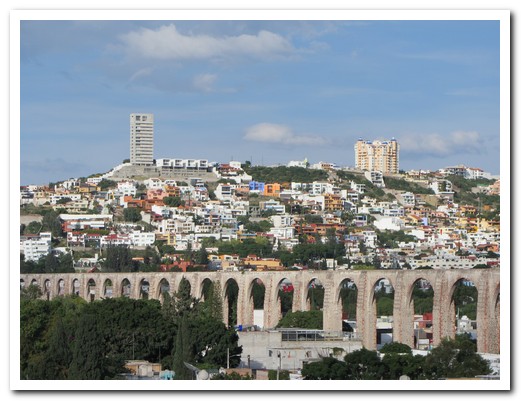
Querétaro´s aqueduct (1726) has 74 arches and is 1280 meters long
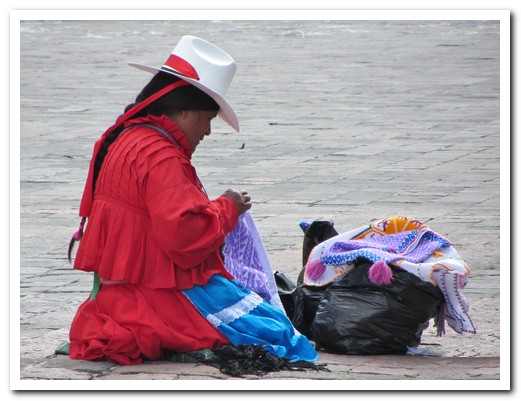
Local lady preparing clothes for sale in Querétaro
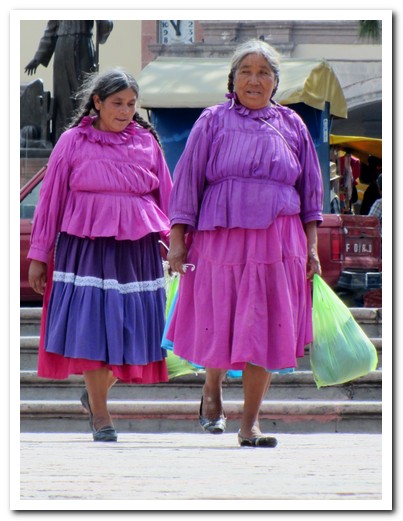
Two ladies
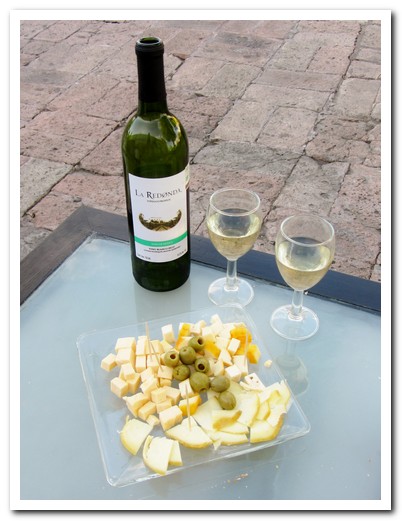
Querétaro wine and cheese at the Pluma Lounge
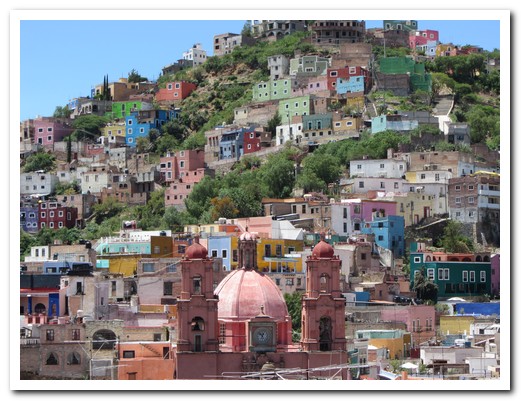
Guanajuato …
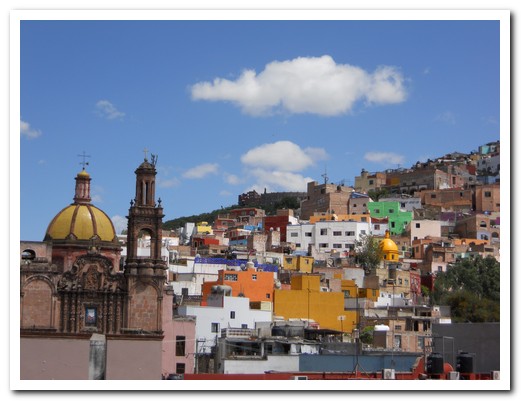
… is built on several hills
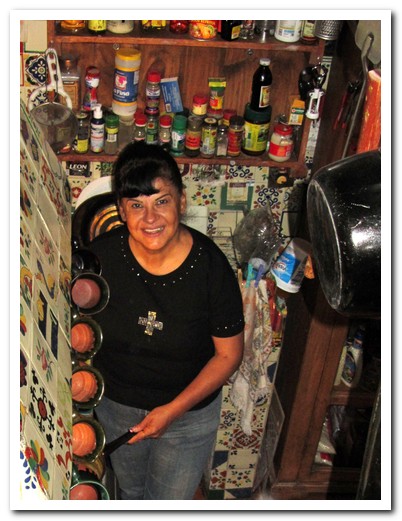
Pita, the friendly owner of Casa de Pita where we stayed in Guanajuato
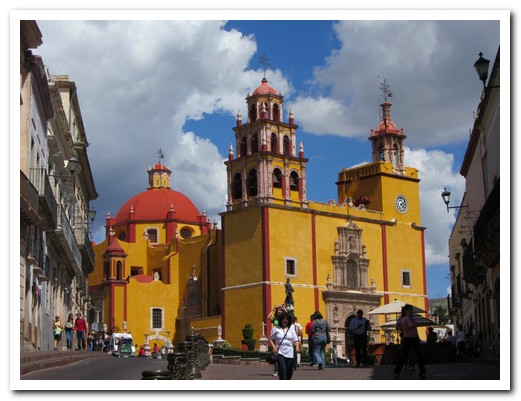
Guanajuato´s Basilica
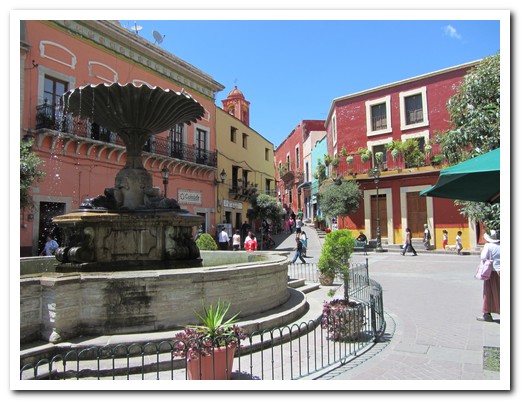
A pretty Plaza
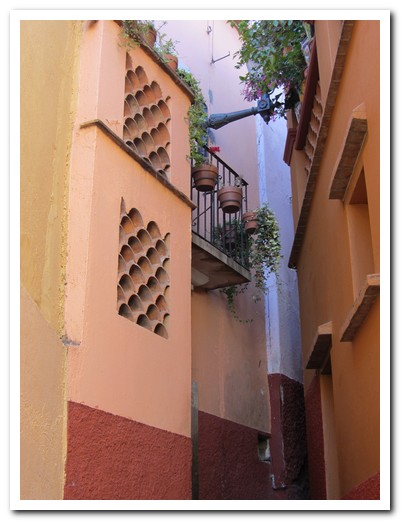
The narrow Callejón Del Beso (Alley of the Kiss)
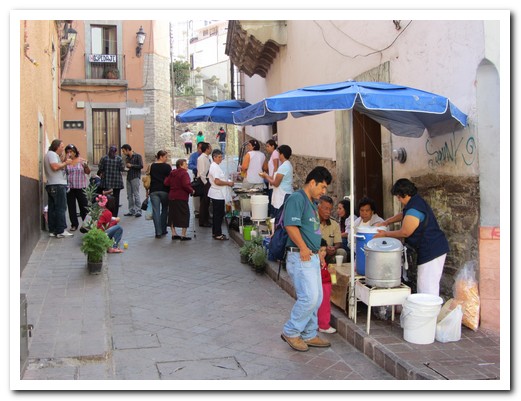
A popular street food stall
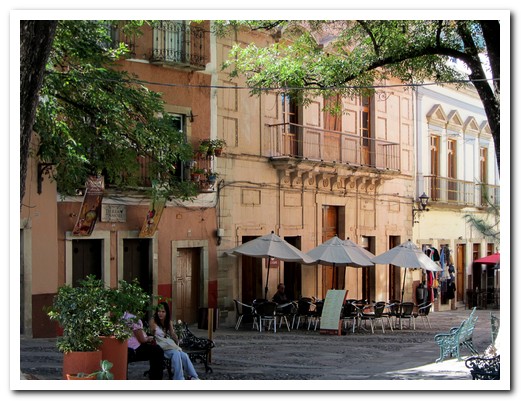
One of many leafy plazas in Guanajuato
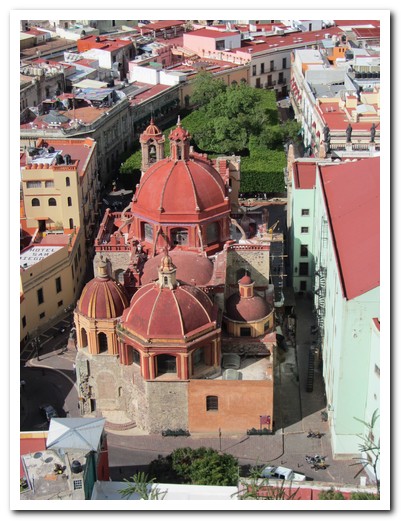
Templo de San Diego
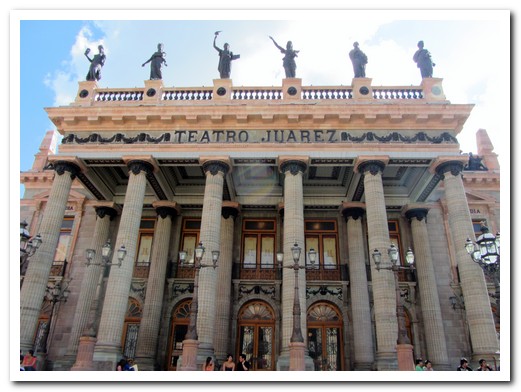
Theatre Juárez
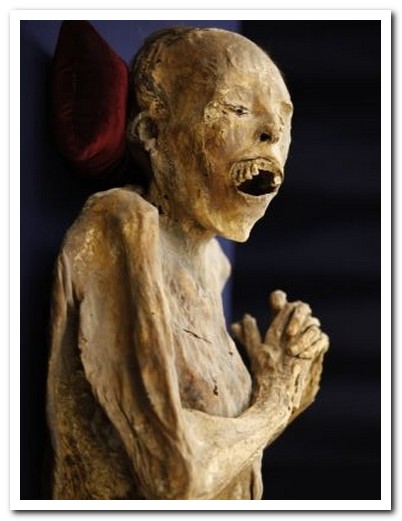
One on the mummies in the Museum in Guanajuata
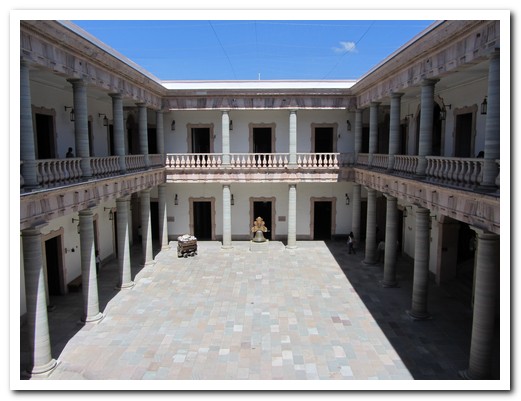
Alhóndiga Granaditas (grain storage) site of the first rebel victory in the war for independence